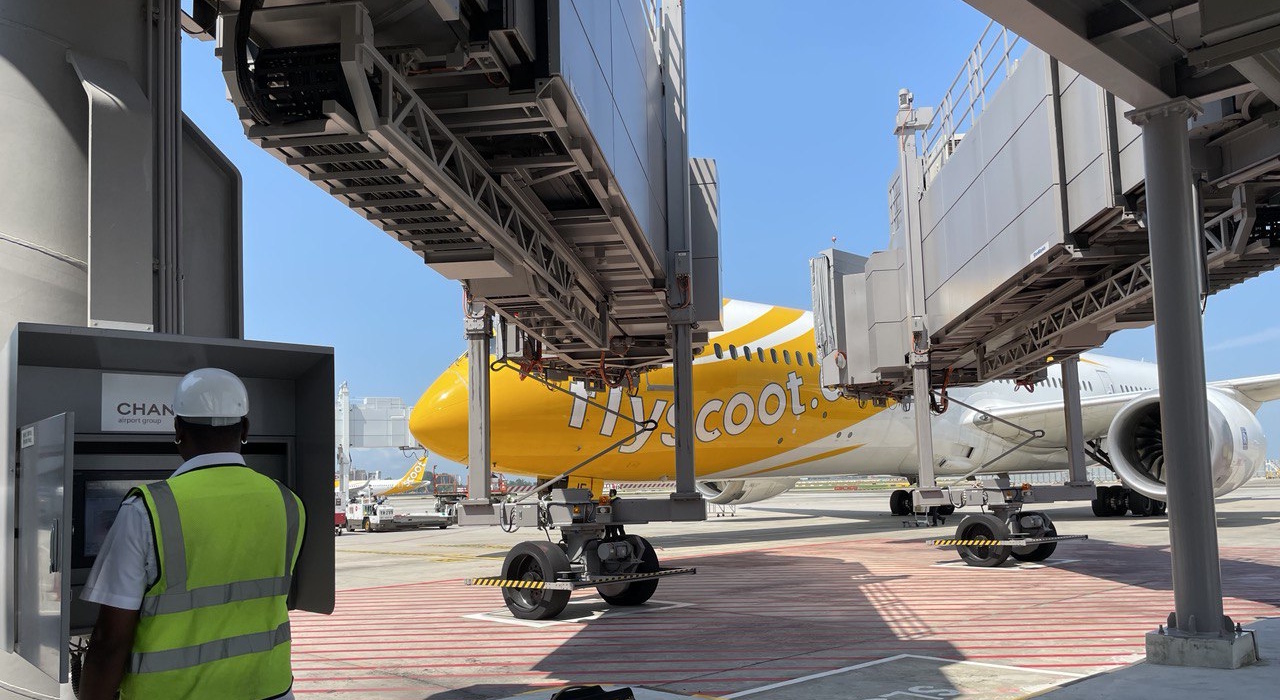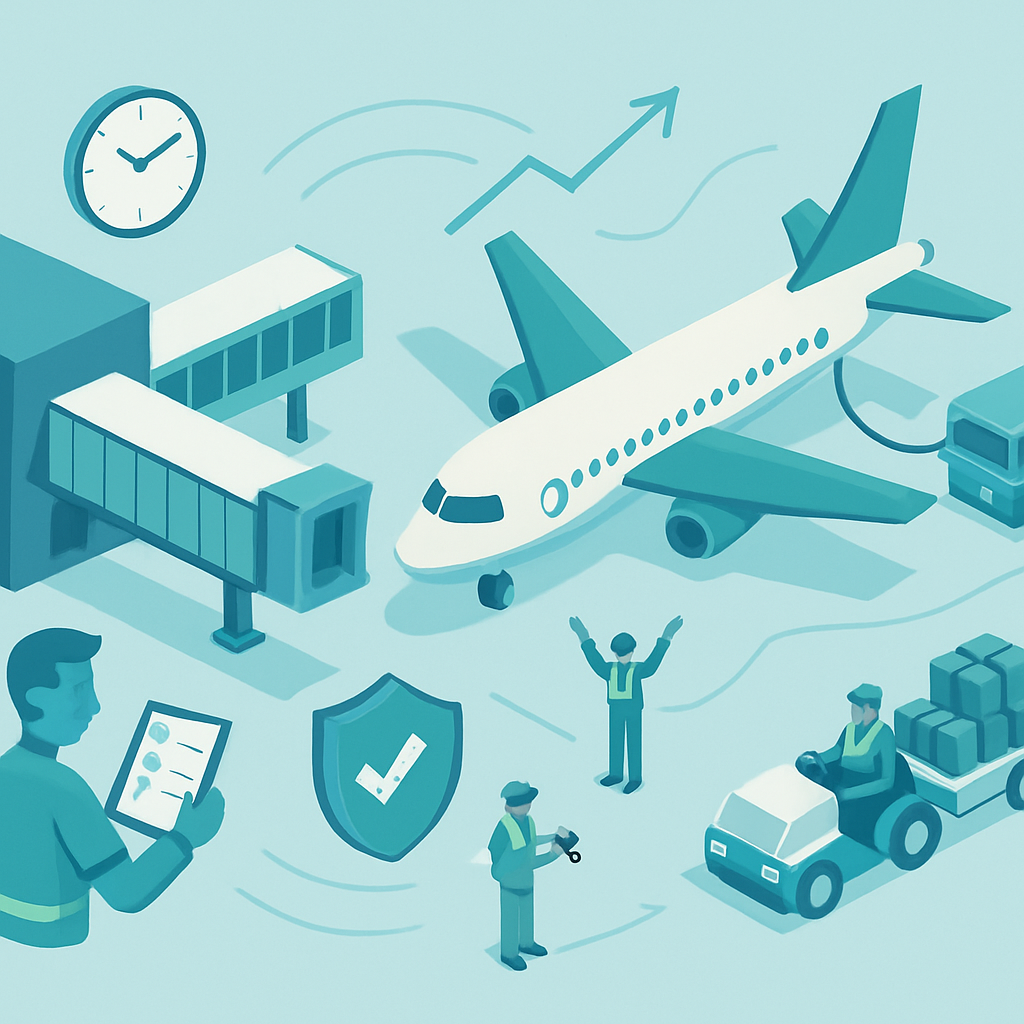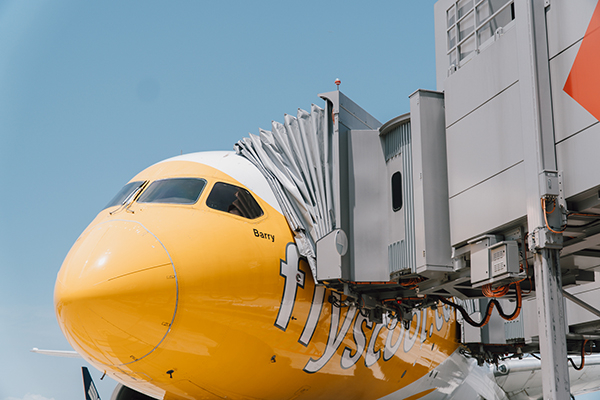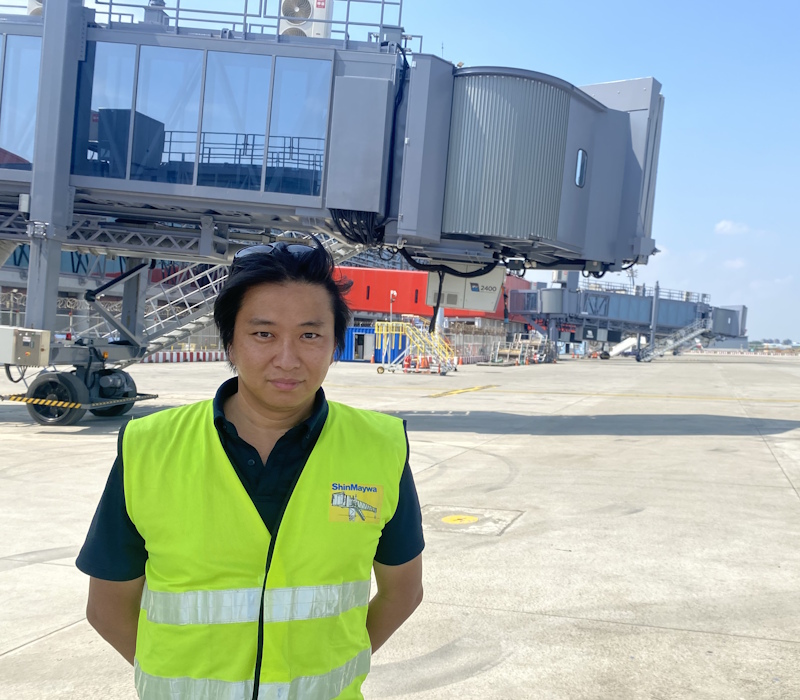Development of the “Intelligent PAXWAYTM AI Fully Automatic Docking System” for the Aircraft passenger boarding bridges
The world's first successful application of AI image-recognition technology for PBB.

Background of development

While the increase in inbound demand is revitalizing airport facilities, it also calls for measures to address the following issues.
- Prevention of human error
- Increase in efficiency of onsite environment, and improvement of working environment and service
- Countermeasures for chronic labor shortage (high turnover rate), shortening operation training time
- Improvement in the on-time performance rate
In order to solve and mitigate these issues, the Ministry of Land, Infrastructure, Transport and Tourism has established the "Public-Private Liaison Council for Promoting Aviation Innovation" to promote labor-saving and automation of ground support operations.
These are common global issues, and efforts to automate airport operations are being promoted not only in Japan but also in airports around the world.
ShinMaywa's solution
ShinMaywa Aircraft Passenger Boarding Bridge (PBB) boasts a track record of delivering more than 1,000 units to airport facilities in Japan and overseas, and boasts the largest market share in Southeast Asia.
In order to make use of our high technological capabilities to "Create Smarter Airports", we have developed technology that automatically manoeuvre the PBB up to 10 centimeters in front of the door of the aircraft. From October 2015 to March 2018, the company repeatedly conducted demonstration experiments at Tokushima Awa Odori Airport to confirm safety, and realized the world's first automatic installation of aircraft passenger boarding bridge on commercial aircraft in actual operation at the airport.
ShinMaywa 's R&D doesn't end there. Assuming remote operation, the company succeeded in developing a "fully automatic system (fully automatic mounting system)" in 2020. After a demonstration experiment at Changi Airport in Singapore, in 2023, in collaboration with Changi Airport Group (CAG), which operates Changi Airport, this is also the world's first* to successfully install boarding bridge autonomous fully autonomous driving (" aircraft model selection-less" method) on commercial aircraft in actual operation.
- * World first: Based on previous reports on airports around the world and an understanding of trends at competitors.
Main features of the "Intelligent PAXWAYTM AI Fully Automatic Docking System"

- 1."Aircraft selection free" realizes high versatility.
- 2.The system automatically manoeuvres the PBB towards the aircraft and dock with the door.
- 3.The operation above requires just one single push of a button. The cameras detect the door position accurately, eliminating the operation for aircraft model selection. This feature eliminates human errors which experienced at airports and enhance manpower efficiency in operation.
- 4.AI determines the door position accurately by processing various conditions primarily such as weather, environment, and fuselage paint work. Even if the system finds the door position undetectable. AI learns such situation so that it can improve the accuracy in proposition to the operating frequency, thus updates regularly.
Comments of Development Site
Mr. Shimomori Airport Equipment Department, Parking Systems Division

(The photo was taken outside the construction area with due regard for safety.)
I took over development from my predecessor, who successfully commercialized the world's first automated docking of boarding bridge With the goal of always being a leader, I took on the project with the aim of staying one step ahead of other companies, aiming to achieve "fully automated docking" + "remote monitoring" = "autonomous, fully automated manoeuvring."
In the development of the "fully automatic docking system", we ultimately created a system that differed from conventional systems, allowing the PBB to automatically move to within 10 centimeters of aircraft door. I believe that we were only able to complete the system because my senior colleague found a way to utilize AI image recognition technology during the conventional development process, and I am grateful to him for that. As a developer, I realize how difficult it is to go from 0 to 1.
We began demonstration testing at Changi Airport in 2019, and in 2020 the safety and accuracy of the system were highly praised by the airport and airlines that use the airport.When the decision was made to commercialize the system, we felt a sense of accomplishment, having cleared the first stage.
The most difficult part of the development process was when we faced the problem of control and image delay while working on the unprecedented remote operation. We were able to solve the control delay by adopting a new communications protocol. As for image delay, we repeatedly tested various factors such as frame rate, resolution, communication equipment selection, and communication environment preparation, and continued to search for a level that was consistent with previous operability. As a result, when we succeeded in commercializing autonomous fully automated manoeuvring (aircraft model selection) for the first time in the world in 2023, we savored the joy of achieving our ultimate goal, which was also the most difficult challenge.
Furthermore, despite the lack of perfect AI technology, during the trial operation period at Changi Airport, boarding bridge equipped with this system achieved a high KPI of operation rate, earning high praise from our co-developer, CAG. We are also honored to have signed a revenue-sharing agreement with the company in May 2025.
In the future, we would like to make the ShinMaywa brand, a Japanese-affiliated company, more known to airports around the world by leveraging our "world's first" technological capabilities that have been highly evaluated by all concerned, our track record of delivering more than 1,000 PBBs worldwide, and our high-quality, highly durable product lineup, many of which have been in service for a long time. I am also very much looking forward to the completion of this system.
I also want to continue to take on the challenge of achieving new "world firsts" to contribute to the optimization of airport operations as a whole, such as enhancing AI from the maintenance perspective and strengthening interfaces with other companies' equipment, without being complacent about the completion of this system.
What is a revenue share agreement?
A performance agreement between the developer and end-user in which benefits both parties with the final completed product.
The agreement stipulates that CAG will continue to support the development and commercial deployment of the autonomous fully automated driving system (aircraft type selection-free, fully autonomous remote-controlled fully automatic docking system) developed by our company, and will also work together to manufacture a prototype PBB for operational testing at Changi Airport in preparation for the expansion of the system.The agreement was concluded between CAG and our Singapore subsidiary; ShinMaywa (Asia) Pte. Ltd.
